By Alexa Lemzy, TextMagic

In the modern retail market, creating an
enjoyable and convenient shopping experience is just as important as having the
best prices and products. Consumers now have a huge number of choices about
where to do business no matter what they are looking to buy, so a great shopper
experience becomes a major factor in keeping your customers coming back again
and again.
Every retailer can benefit from optimizing
their shopping experience, and these are 3 of the key areas they should be
focusing on:
1.
Improve Ease-Of-Use And Accessibility
Shopping should not be a confusing
or frustrating experience. Make sure everything customers could need to know is
as easy to find as possible. There are a number of areas where many retailers
drop the ball on this point:
- Display stock levels online.
Your online store probably
already shows how much of a product you have available to order, but does it do
the same for your physical stores? If a customer looks online to check you
stock a product and takes a trip to your store it can be frustrating to
discover their local store doesn’t stock their item, and they might settle for
an alternative product elsewhere to avoid a wasted trip.
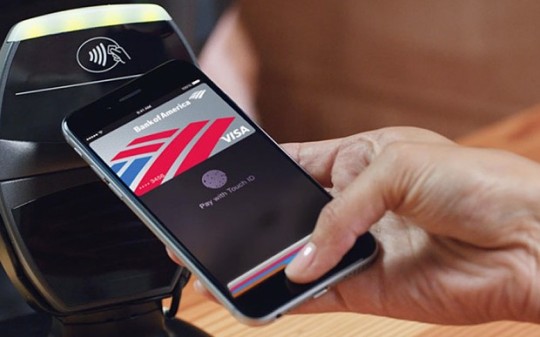
- Offer a variety of payment options.
Modern consumers want to pay
for their purchases with a wide range of methods and companies including
Paypal, Amazon, Apple, Google and many more. You don’t have to go as far as
accepting payment in Bitcoin, but with almost
half of all mobile owners using a mobile wallet, at a minimum your business
should acknowledge the expectation to pay for everything with a tap of a
smartphone and move away from outdated
POS systems.
- Make it easy to get in touch online.
One of the biggest drawbacks of doing business
online instead of in-store is the inability to just ask a member of staff.
Clear information on products, delivery and returns all helps, but customers
also need a way to get in touch.
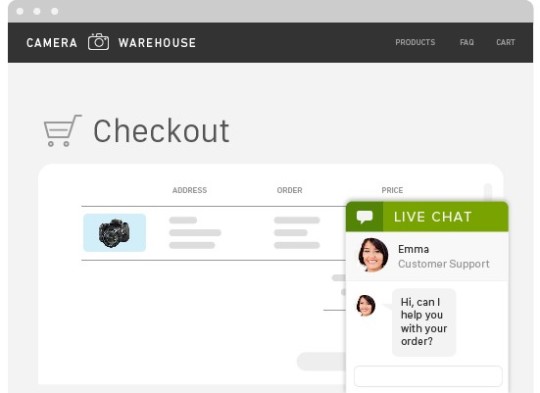
Live chat support is convenient for
customers and easy to implement, and your email addresses should be easy to
find, but some customers
just prefer to talk instead. Phone numbers for your headquarters as well as
local stores should be just as easy to find, or you could be giving the
impression you don’t want to speak to customers.
- Automate your returns policy.
Knowing they will be able
to return an item they aren’t sure about gives customers more security when
making purchases, especially online. Allowing customers to easily exchange or
refund items may cost a little in postage and processing fees, but this is a
minor investment to build
a reputation as a trustworthy retailer.
Amazon’s returns policy, for
example, is extremely generous and open to all kinds of abuse by customers, but
it is a major factor in Amazon’s reputation as one of the easiest and safest
ways to buy online.
- Mobile-friendly web site design.
Customers use their phones
and tablets just as much if not more than their desktop or laptop, if your site
does not offer smooth experience on any device customers will find a competitor
that does.
2. Unifying In-Store And Online Experience
Use your online presence to improve and
enhance the in-store experience rather than replace it, and vice versa. These
are just a few of the ways you can unify
these two aspects of your business:
- Enable click-and-collect.
This is a great option for
customers who are busy but still want to get their purchase today, and much
more convenient than phoning their local store to reserve an item. For
customers pressed for time this also speeds up their shop as your staff will
have all their items ready and waiting, great for regular shopping such as
groceries. John Lewis prominently advertise their click and collect service in
both John Lewis and Waitrose stores to make sure customers know they have the
option.
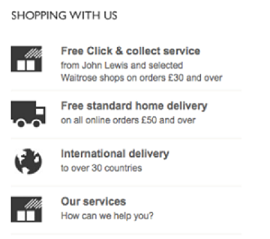
- Allow customer to order home deliveries from in-store.
Bulky items are often not
convenient for customers to take home themselves, especially if they have to
get home on foot or by public transport. Customers for these items will often
want to see the item in-store and talk to your staff about it, then purchase
online later.
They could decide against
the purchase or go with a cheaper competitor through doing this, so cut out the
middleman and enable your in-store staff to arrange a home delivery for them.
- Invest in your live support and email teams.
If your customers can get
excellent advice and product recommendations from your staff in-store, why
don’t they also get this online?
Make sure your online
agents are just as knowledgeable as your retail staff whether this is an
in-house or outsourced team.
ModCloth are known for their
great customer support and their live chat team don’t let them down, as you can
see in the image below they are able to fully answer the query as well as
provide additional information the customer may need to be as helpful as possible.
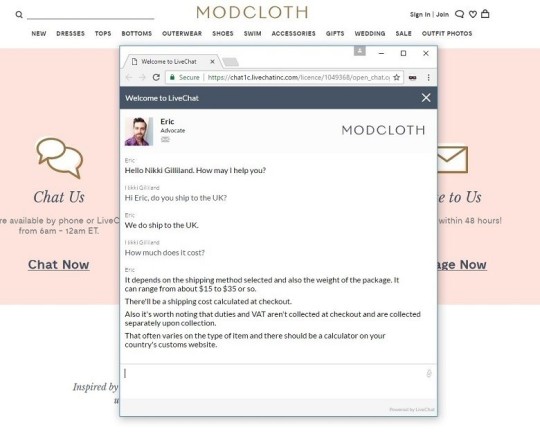
- Offer the same sales and discounts.
If you are advertising
reduced prices online, customers will be disappointed to be asked for the full
price in-store. Similarly if you are giving out discount codes via social
media, email or SMS, these should be valid both in-store and online.
Put simply, it should not matter how your
customers are reaching you, they should always receive the same level of
service.
3. Feedback And Analytics
Collecting useful feedback and studying
your analytics data is critical to improving your shopping experience. Here are
a few ideas to collect customer feedback and make evidence-based improvements
to your store both online and in-store:
- Use a wide variety of customer survey methods.
Online or email
questionnaires are great for getting detailed feedback but can be
time-consuming for both you and your customers. For simpler feedback such as scoring
various aspects of your business out of 10, SMS surveys can have higher
response rates, and can be more convenient particularly for in-store
customers.
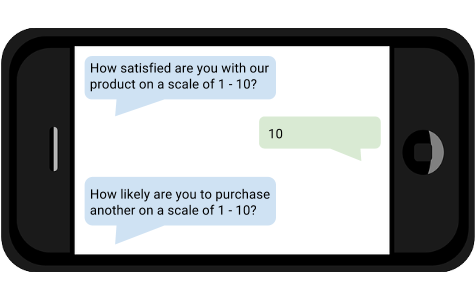
Getting online to fill out your
survey requires a connection and they may forget by the time they are get home,
but customers are rarely without the ability to send and receive texts.
- Stock and price items in-store based on online click rates.
The information you get online about where your
customers go on the site and which products they look at gives you a lot of
information about interest and demand you won’t necessarily get in-store. An
in-store customer who leaves without purchasing or speaking to your staff tells
you nothing about why you didn’t get a sale, whereas online you know exactly
what they looked at and how far into the purchasing process they got.
- Use A/B testing.
A/B testing is a very simple and cheap way to make
improvements to your customer experience. Anything from product and shelf
placement in-store to minor UI changes online can have a surprisingly large
impact on sales and the overall experience, and A/B testing is a very
cost-effective way to prove changes before a business-wide rollout.
For example, Revolve tested a simple change to add more promotions to its
mobile landing page and gained an amazing 350% increase in conversions!
Optimizing your store for the ultimate
shopping experience is all about giving your customers as many options as
possible to do business with you the way they want to, as easily and simply as
possible. Regularly collecting feedback and acting on analytics data is
critical to knowing what customers want and how they want your business to
work. As long as you are listening to your customers and making changes to
accommodate the way they want to shop, you’ll be on the path to providing a
better shopping experience.
Alexa Lemzy is the customer support manager and editor at TextMagic blog. She is constantly monitoring best practices and innovative approaches that help companies build better communication with both employees and clients.






